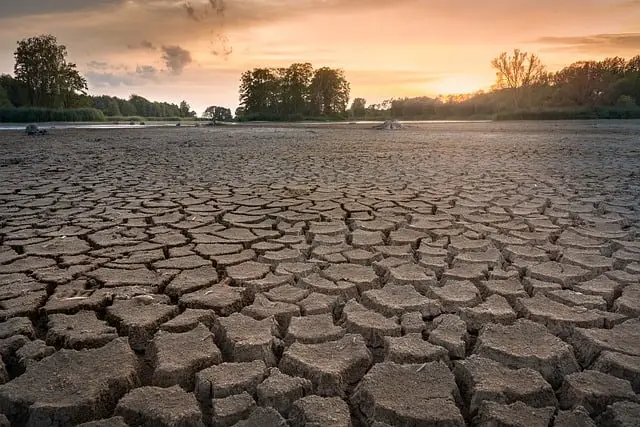
We are constantly bombarded with news about the coming water crisis, with the west coast of the United States perennially in drought state through to drinking water shortages throughout the developed world. Not being isolated to just those two examples, fresh clean water is imperative to human survival and with an ever-shrinking amount of fresh water being needed by a growing world population, a solution is needed. Desalination represents a potential answer to the water crisis, however, is it THE solution?
Desalination has the ability to solve the global water crisis. The process itself needs to be optimized and further refined, however, it certainly represents the most effective solution to water shortages available today. To better inform the decision, key factors must be taken into account.
If you’re looking at the challenges desalination faces with solving the water crisis alone, I wrote an article on the topic: Why Desalination Won’t Solve the Water Crisis: 3 Key Reasons.
Effectiveness: Does it do what it’s supposed to?
As a general rule desalination does what it is supposed to do, it converts salty water to fresh water. The water produced from desalination is just as drinkable as regular water from a reservoir despite the various concerns on the topic.
The trick with the effectiveness of desalination is; how well does it do what it’s supposed to do. the answer being, pretty well, but not perfect. There are a few shortcomings of desalination, the two main concerns being the waste products it produces and the energy it consumes. The waste it produces is known as brine, a hyper-saline solution of water, although not ideal it is certainly not as toxic as it is made out to be, particularly when disposed of in areas of high circulation when the salty brine can be quickly absorbed by the surrounding body of water like the Pacific Coast of California. Energy usage is another question regarding its effectiveness, however, this simply becomes a product of how badly we want or need water, thus converting it into an economic problem. Desalination is an energy-intensive process however if it alleviates stress from drought-stricken areas and dry rivers, this needs to be taken into consideration when deciding its effectiveness. From an effectiveness viewpoint, desalination has the ability to solve the water crisis if implemented correctly.
If you are concerned or interested in the drinkability of desalinated water, I wrote an article clarifying any concerns on the topic as well as some potential improvements Can You Drink Desalinated Water: The 3 Most Common Queries.

Efficiency: Does it work in a viable manner?
When the true cost of water is taken into account, desalination is an economically viable activity. Problems arise when water is artificially cheap or subsidized by the government leading to overuse by the public due to the mismatch between scarcity and price. This practice of artificially cheap water is the underlying cause of the water shortage. If water were priced to match its actual scarcity the supply would match the demand and less water would be used, raising the price of water is, unfortunately, a political poison so the problem needs to be tackled in other ways.
Technically desalinated water costs more than reservoir-sourced water when energy costs are taken into account (All data is taken at the time of writing 2/11/2022).
Cost of water per cubic metre using California as an example
- Current acre-foot price of water on Nasdaq Veles California Water Index (NQH2O) = $1000
- Cubic metres per acre foot = 1233.48
- $1000 / 1233.48 = 81 cents per cubic metre
Cost of Reverse Osmosis Desalination
- Price per kWh of energy in California: 24.4 cents
- kWh per cubic metre of water produced with Reverse Osmosis = 3kWh to 10kWh
- The price per cubic metre of water is between $0.732 to $2.44 (3×24.4c=73.2c & 10×24.4c=$2.44)
So as it can be seen that desalinated water priced approximately between 73 cents and $2.40 is generally more expensive than the market rate for water at 81 cents. However, it has to be taken into account that water costs are trending up long-term (Up 400% since the beginning of 2020) and energy costs are trending down as well as improving desalination efficiency. So, desalination may be marginal in terms of economics at the present time however the long-term prospects as an investment are compelling.
If you are interested in the underlying business model for desalination, I wrote an article on the topic Is Desalination Profitable? The Business Model Explained.
Energy: Can it be powered by clean energy?

There is no reason why desalination cannot be powered by clean energy. As large-scale desalination plants require a huge amount of energy, this can put considerable pressure on local grids and may even require advanced investment into power generation prior to start-up.
A mix of clean energy options can provide reliable green power to desalination plants, the potential options depend on the local geography & geology, population density and political climate.
- Wave & Tidal Energy: As many desalination plants are situated in high-energy coastal environments, this wave & tidal energy can be harnessed as a source to generate electricity or even as a direct pressure source for the reverse osmosis process. The downside is the potential obstruction to the beachfront scenery and environment.
- Solar: Many desalination plants are located in arid sunny areas which makes them ideal candidates for solar energy. The downside is that solar provides no electricity at night.
- Wind Turbines: Frequently located in coastal environments that are reliably windy, wind turbines are a feasible option as a part of an energy mix for desalination plants. The downsides are the amount of land required, general obstruction to surrounding areas and the fact that it isn’t always windy.
- Geothermal energy: Very location dependent, however, places like California located on the San Andreas faultline offer geothermal opportunities that are not available elsewhere. Large set-up costs but incredibly reliable source of energy once set up.
- Nuclear: The fallback plan if a combination of the above cannot service a constant energy supply to the desalination plant. cheap clean energy that is location-independent. The downsides are the misinformation around safety records and their politically charged nature.
Do you know desalination can actually help encourage investment in renewable energy? I wrote an article explaining this and other environmental benefits of the process here.
Scale: Can it be done at a large enough scale?
Desalination is technically infinitely scaleable to be able to service any population size, the constraining factors are energy availability and land area, and the technology is not an issue. The Ras Al Khair operation in Saudi Arabia produces over 400 swimming pools of water each day and provides sufficient water for 2.9 million people to live comfortably! I wrote an article on this specific facility here if you are interested.

Education: Is it understood and accepted by society?
Desalination is not well understood nor universally accepted as a sustainable solution by the general population. Politics, unfortunately, gets in the way of desalination projects with the negative impacts of desalination exaggerated whilst discounting benefits or understating the scale of the water crisis desalination aims to help solve. The way around this is to emphasize facts and figures when discussing the topic in schools, universities and with friends as well as highlighting the severity of the water shortages around the world and not taking fresh water for granted.
The often well-meaning intentions of environmentally conscious inner city residents can derail desalination projects that make economic and environmental sense. I wrote an article explaining how this misplaced fear among other factors discourages the growth of the desalination industry in California here.


